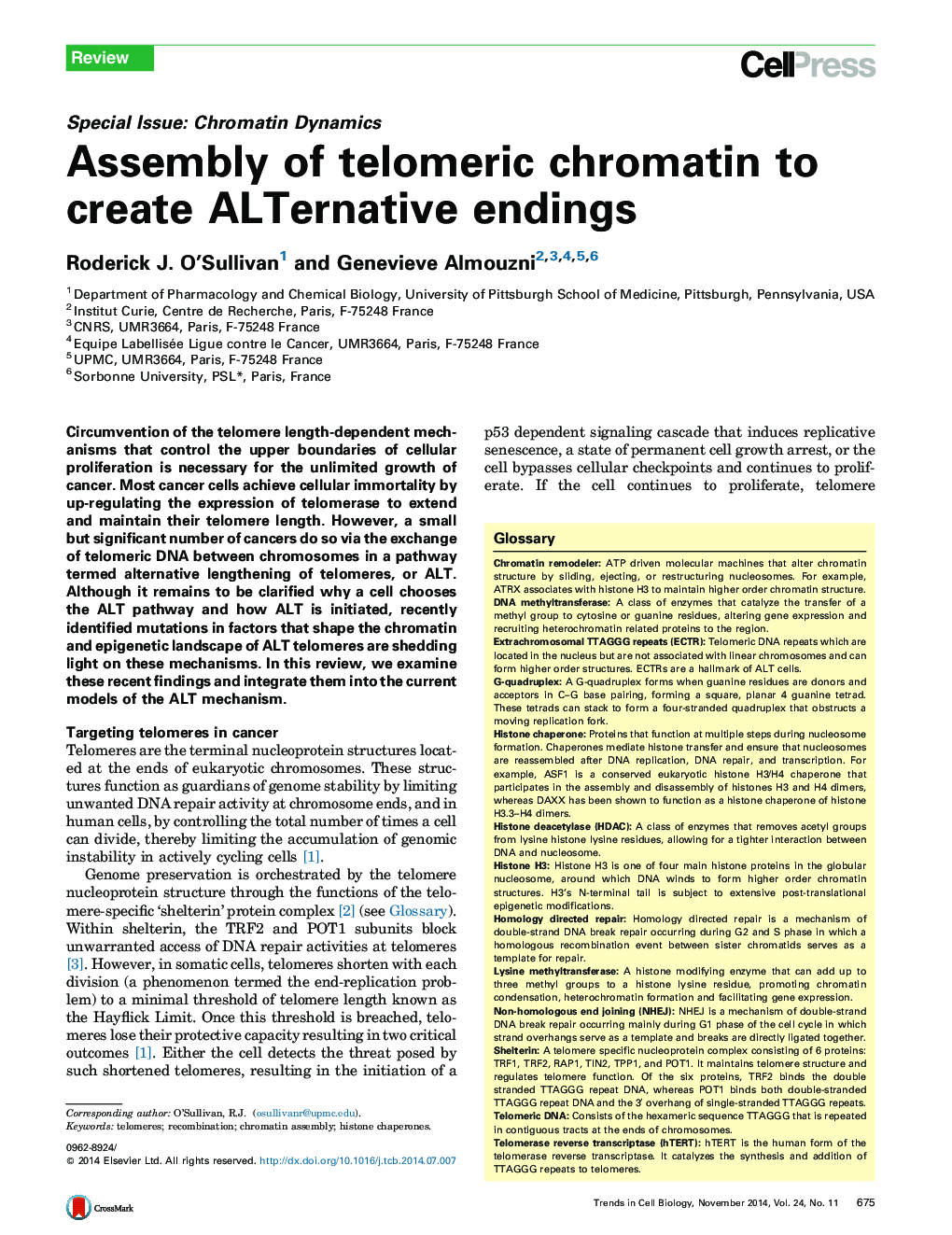| Article ID | Journal | Published Year | Pages | File Type |
|---|---|---|---|---|
| 2204388 | Trends in Cell Biology | 2014 | 11 Pages |
•Mutations in ATRX, DAXX, and histone genes correlate with alternative lengthening of telomeres (ALT) activity in tumors.•ALT telomeres appear to have a unique genomic architecture and chromatin landscape.•We provide models as to how these features of telomeres may enable ALT activation.
Circumvention of the telomere length-dependent mechanisms that control the upper boundaries of cellular proliferation is necessary for the unlimited growth of cancer. Most cancer cells achieve cellular immortality by up-regulating the expression of telomerase to extend and maintain their telomere length. However, a small but significant number of cancers do so via the exchange of telomeric DNA between chromosomes in a pathway termed alternative lengthening of telomeres, or ALT. Although it remains to be clarified why a cell chooses the ALT pathway and how ALT is initiated, recently identified mutations in factors that shape the chromatin and epigenetic landscape of ALT telomeres are shedding light on these mechanisms. In this review, we examine these recent findings and integrate them into the current models of the ALT mechanism.
